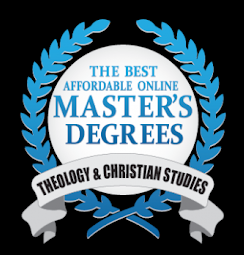Scholasticism was an early medieval scholastic system of scholastic philosophy that used a highly selective approach to philosophical study, namely based upon a highly developed Latin Catholic theistic tradition that dominated teaching at the medieval universities of Europe from around 1100 to 1700. The term scholasticism derives from the word “schola” which means school. The principle underlies scholastic philosophy is that knowledge is of value only to those who can apply it to the world and its problems. This includes all humans because knowledge has an innate tendency to become general, and individuals become better equipped to deal with problems when they have been exposed to larger bodies of knowledge and have had time to make their own judgments. In scholastic philosophy, knowledge is static and its evolution is conditioned by the effort and discipline required to acquire it.
In contrast to the historicist and presbyterian scholasticism, which held that Faith was an epiphenomenon or self-contained component of the sciences, scholastic theology maintains that Faith is an integrated part of the sciences and must be studied in its entirety as part of a consistent and comprehensive program of religious studies. The scholastic approach to theology is characterized by sharp distinction between scholastic theology and patristic theology. The former avoids the tendency to reduce the truths of religion to statements of strict science, such as those found in modern physics and genetics. By the seventeenth century, many clergymen, in reaction against the progressivism of the time, sought to preserve the role of scholastic theology as an independent discipline on grounds that it was concerned with intellectual learning. As a result, there are few definitions of scholastic theology that agree even to today's definitions of religious scholarship and religious studies.
 |
Prolegomena: A Defense of the Scholastic Method (A Contemporary – scholastic theology | scholastic theology
|
The scholastic revolution against medieval theology is best described in terms of its contribution to the history of philosophy. The scholastic formulations of the Middle Ages stressed the problematic nature of scholasticism. Medieval theology was saturated in definitions of scholasticism that tended to minimize its influence on scripture. Some medievalists accused scholastic theology of reducing scripture to an “eclectus”. Medievalists associated scholasticism with intellectualism, which they considered to be the cardinal fault of medieval theology. In reaction to this intellectualism, the scholastic fathers and church fathers made scholasticism a much more intellectually acceptable proposition.
 |
Scholasticism – Wikipedia – scholastic theology | scholastic theology
|
Modern scholastic theology is a product of the developments that succeeded in the scholastic philosophy of the Middle Ages. In the development of modern scholasticism, some of the intellectualist tendencies that plagued scholastic theology during the scholastic age were replaced by neophilistic ideas. One of the most influential representatives of this replacement tendency was Thomas Aquinas. Originating from Italy, Thomas Aquinas rejected the traditional scholastic philosophy of divine causality and rejected the physical creation and eternity of the world as inadequate explanation of divine reality. He rejected all theories of predestination, including determinism and free will, on the grounds that these theories were either self-contradictory or incompatible with the truths revealed through the unperceived will of God.
 |
Introduction to Scholastic Theology : Leinsle, Ulrich G | scholastic theology
|
In contrast to the reduction of scholastic theology to dialectical reductionism, theologies of the scholastic philosophers are often intricate, metaphorical, and emotional in character. Thomas Aquinas is the best known among the scholastic philosophers for his detailed explanations of divine revelation. John Locke, one of the most influential of the English philosophers, expressed skepticism regarding the reality of objective reality. Richard Rorty, another of the English philosophers, spoke of an “absurd” world view in which the physical world and all of its complex workings were nothing more than a machine designed by an intelligent mind. John Paul II added his name to the list of those who rejected the scholastic philosophy of naturalism in his famous treatises on the Theology of the Body and the Spirit.
Theologians of the scholastic school attempted to overcome the logical difficulties encountered in attempts to interpret scripture through scientific methods. Williamallah, David Chalmers, and Henry Norwood are among the most prolific exponents of this approach in the later ages. In the language of the New Testament theologies of the scholastic philosophers are characterized by a desire to reduce the mystery of scripture to a few meaningful words. They attempt to read the Bible literally by translating each word into a science or abstract idea. For example, the popular idea of creation ex nihilo (the first word meaning “creation” in the original languages) is rendered into an axiom by these anti-theists. A simple understanding of the concept of creation can be used to oppose common views of evolution, relativity, and probability.
While some representatives of the scholastic movement have been accused of being irrational, revisionist scholars argue that this can only be relative to certain limited periods in history. In general, these scholars maintain that theologies of the scholastic movement were developed in response to the limitations of rationalism. Theological debate was further fueled by the rise of medieval man's cognitive deficiencies, his need for a higher level of self-legends, and his increasing incapability of coherent thought.
In general, the scholastic philosophers are often found divided between two camps, the scholastic philosophers of the second century AD and the scholastic philosophers of the sixteenth and seventeenth centuries AD. The scholastic philosophers of the second century AD sought to make a breakthrough in the understanding of biblical texts by developing a highly abstract and interpretive method called scholastic theology. Theological debate was particularly fierce between Origen and Clement of Alexandria. Origen's ideas about original sin and theosis gained Origen's followers while the heretics rejected the idea of a soul after death.




Post a Comment for "What You Need to Know About Scholastic Theology"